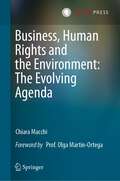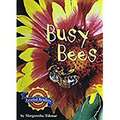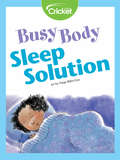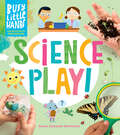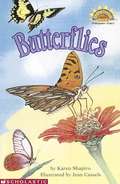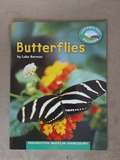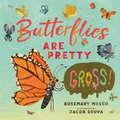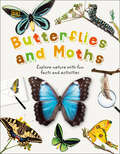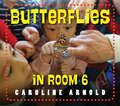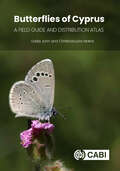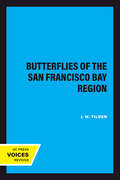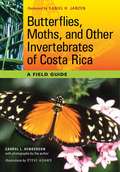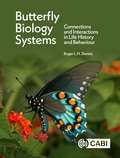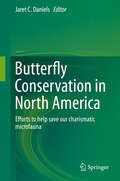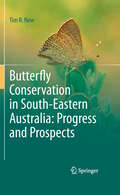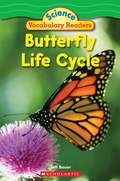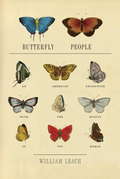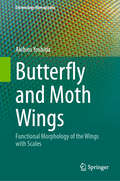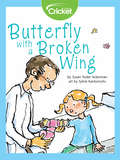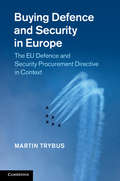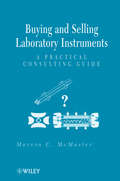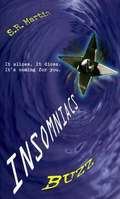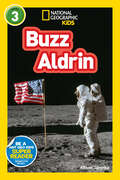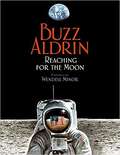- Table View
- List View
Business, Human Rights and the Environment: The Evolving Agenda
by Chiara MacchiMore than ten years after the adoption of the UN Guiding Principles on Business and Human Rights, this book critically reviews the achievements, limits and next frontiers of business and human rights following the ‘protect, respect, remedy’ trichotomy. The UN Guiding Principles acted as a catalyst for hitherto unprecedented regulatory and judicial developments. The monograph by Macchi proposes a functionalist reading of the state’s duty to regulate the transnational activities of corporations in order to protect human rights and adopts a holistic approach to the corporate responsibility to respect, arguing that environmental and climate due diligence are inherent dimensions of human rights due diligence. In the volume emerging legislations are assessed on mandatory human rights and environmental due diligence, as well as the potential and limitations of a binding international treaty on business and human rights. The book also reviews groundbreaking litigation against transnational corporations, such as Lungowe v. Vedanta or Milieudefensie v. Shell, for their human rights and climate change impacts. The book is primarily targeted at academic and non-academic legal experts, as well as at researchers and students looking at business and human rights issues through the lenses of legal studies (particularly international law and European law), political sciences, business ethics, and management. Additionally, it should also find a readership among practitioners working in the public or private sector (consultants, CSR officers, legal officers, etc.) willing to familiarize themselves with the expanding areas of liability, financial and reputational risks connected to the social and environmental impacts of global supply chains.Chiara Macchi is currently Lecturer in Law at Wageningen University & Research in The Netherlands.
Busy Bees (Houghton Mifflin Reading Leveled Readers)
by Margaretha TakmarIn this story, you will learn about several kinds of bees.
Busy Body Sleep Solution
by Amy TaoEmma's having some trouble going to sleep. But with the help of Grammy's busy body sleep solution, she says goodnight to her hardworking body and drifts off to sleep.
Busy Little Hands: Learning Activities for Preschoolers (Busy Little Hands)
by Susan Edwards RichmondPreschoolers are introduced to core science concepts with this playful format featuring 20 hands-on activities that use everyday household materials, including a vinegar volcano, a hula hoop count, and a kitchen sink or swim experiment.
Butterflies
by Karen Shapiro Jean CasselsThis rhyming easy-to-read non-fiction science reader covers a favorite nature subject taught in the early childhood curriculum -- the metamorphosis of a caterpillar to a butterfly. "Butterflies start as tiny eggs. Out come caterpillars with many legs...."
Butterflies (Be an Expert!)
by Erin KellyKids love to be the experts! Now they can feel like real pros with this exciting nonfiction series for beginning readers. Kids will be hooked on the thrilling real-world topics and big, bright photos. Each book features simple sentences and sight words that children can practice reading. Then, with support, kids can dig deeper into the extra facts, Q&As, and fun challenges.Fans of this series will be eager to become real experts!Some are very colorful. Some are see-through. They are all beautiful! What do you know about butterflies like the monarch, the blue morpho, and the glasswing? With this book you can become an expert!
Butterflies Are Pretty ... Gross! (Nature's Top Secrets)
by Rosemary MoscoWarning -- this book contains top-secret information about butterflies! Prepare to be shocked and grossed out by this hilarious and totally true picture book introduction to a fascinating insect.Butterflies are beautiful and quiet and gentle and sparkly . . . but that's not the whole truth. Butterflies can be GROSS. And one butterfly in particular is here to let everyone know! Talking directly to the reader, a monarch butterfly reveals how its kind is so much more than what we think. Did you know some butterflies enjoy feasting on dead animals, rotten fruit, tears and even poop? Some butterflies are loud, like the Cracker butterfly. Some are stinky -- the smell scares predators away. Butterflies can be sneaky, like the ones who pretend to be ants to get free babysitting. This hilarious and refreshing book with silly and sweet illustrations explores the science of butterflies and shows that these insects are not the stereotypically cutesy critters we often think they are -- they are fascinating, disgusting, complicated and amazing creatures.
Butterflies and Moths: Explore Nature with Fun Facts and Activities (Nature Explorers)
by DKThe perfect companion for children eager to understand how caterpillars become butterflies.Explore butterfly habitats and find out all about how butterflies work, from wings to feet. With exciting activities, like how to make a butterfly kite, and plenty of fun facts, this book is a must for children curious about butterflies and moths.
Butterflies in Room 6: See How They Grow (Life Cycles in Room 6)
by Caroline ArnoldKindergarteners learn the joys of raising butterflies from egg to adult in this close-up look at the insect life cycle.A visit to Mrs. Best's classroom is always inspiring! Follow a classroom of real kindergartners as they participate in a popular classroom activity: raising butterflies. Astonishing photographs show the life cycle of the painted lady butterfly, from egg to caterpillar to chrysalis to adult. Engaging text captures the children's wonder and explains the science behind metamorphosis. The Life Cycles in Room 6 series follows Mrs. Best&’s real kindergarten class as they help things grow. This photo-illustrated series engages readers with hands-on science in the classroom and beyond.
Butterflies of Cyprus: A Field Guide and Distribution Atlas
by Eddie John Christodoulos MakrisThis new book summarises decades of research and collation of distributional data. From the tiny Freyeria trochylus (Grass Jewel), Europe's smallest butterfly, to the magnificent, newly arrived Papilio demoleus (Lime Swallowtail), this comprehensively illustrated reference book and field guide includes all butterfly species known in Cyprus over the past 100 years. Where applicable, reference is made to subspecies of related taxa present in nearby countries of the eastern Mediterranean. The images on the cover represent the island's seven endemics, discussed in depth. Included, too, are detailed distribution maps representing records garnered from almost 300 recorders/sources (particularly members of the Cyprus Butterfly Study Group), over a period of more than 20 years.
Butterflies of the San Francisco Bay Region (California Natural History Guides #12)
by J. W. TildenThis title is part of UC Press's Voices Revived program, which commemorates University of California Press’s mission to seek out and cultivate the brightest minds and give them voice, reach, and impact. Drawing on a backlist dating to 1893, Voices Revived makes high-quality, peer-reviewed scholarship accessible once again using print-on-demand technology. This title was originally published in 1965.
Butterflies, Moths, and Other Invertebrates of Costa Rica
by Carrol L. Henderson Daniel H. Janzen Steve AdamsAt the biological crossroads of the Americas, Costa Rica hosts an astonishing array of plants and animals-over half a million species! Ecotourists, birders, and biologists come from around the world, drawn by the likelihood of seeing more than three or four hundred species of birds and other animals during even a short stay. To help all these visitors, as well as local residents, identify and enjoy the wildlife of Costa Rica, Carrol Henderson published Field Guide to the Wildlife of Costa Rica in 2002, and it instantly became the indispensable guide. Now Henderson has created a dedicated field guide to more than one hundred tropical butterflies, moths, and other invertebrates that travelers are most likely to see while exploring the wild lands of Costa Rica. He includes fascinating information on their natural history, ecology, identification, and behavior gleaned from his forty years of travels and wildlife viewing, as well as details on where to see these remarkable and beautiful creatures. The butterflies, moths, and other invertebrates are illustrated by over 180 stunning and colorful photographs-most of which were taken in the wild by Henderson. A detailed and invaluable appendix that identifies many of Costa Rica's best wildlife-watching destinations, lodges, and contact information for trip-planning purposes completes the volume.
Butterfly Biology Systems: Connections and Interactions in Life History and Behaviour
by Roger L DennisIn Butterfly Biology Systems Roger Dennis explores key topics and contentious issues in butterfly biology, specifically those in life history and behaviour. Uniquely, using a systems approach, the book focuses on the degree of integration and feedback between components and elements affecting each issue, as well as the links between different issues. The book comprises four sections. The first two sections introduce the reader to principles and approaches for investigating complex relationships, and provide a platform of knowledge on butterfly biology. The final two sections deal in turn with life history and behaviour, covering key issues affecting different stages of development from eggs to adults. The book is extensively illustrated with original diagrams and models, all of which have detailed legends, produced to enhance a broader understanding, and to provide templates for future research. It includes a detailed bibliography and glossary providing an essential gateway to the extensive literature on butterfly biology. Butterfly Biology Systems is essential reading for graduate students and researchers in insect ecology, evolution, behaviour and conservation. It will also be of great value to anyone interested in butterflies. Introduces a systems approach to butterfly biology Includes succinct reviews of the key interrelationships in butterfly life history and behaviour Illustrates more than 100 models to advance research into butterfly biology systems
Butterfly Conservation in North America: Efforts to help save our charismatic microfauna
by Jaret C. DanielsThe book addresses this critical need by providing a straightforward and easy to read primer to key elements of at-risk butterfly conservation programs including captive husbandry, organism reintroduction, habitat restoration, population monitoring, recovery planning and cooperative programs. Impacts from habitat loss and fragmentation, invasive species, and climate change continue to accelerate the rate of imperilment and necessitate increased conservation action. Zoos, natural history museums, botanical gardens and wildlife agencies are progressively focusing on insects, particularly charismatic groups such as butterflies and native pollinators, to help advance local conservation efforts and foster increased community interest and engagement. Today, many institutions and their partners have successfully initiated at-risk butterfly conservation programs, and numerous others are exploring ways to become involved. However, insufficient experience and familiarity with insects is a critical constraint preventing staff and institutions from adequately planning, implementing and evaluating organism-targeted activities. The information provided is intended to improve staff practices, learn from existing programs, promote broader information exchange, and strengthen institutional ability to develop new or improve existing butterfly conservation initiatives. The information provided is intended to improve staff practices, learn from existing programs, promote broader information exchange, and strengthen institutional ability to develop new or improve existing butterfly conservation initiatives. This book will be useful to professionals from zoos, natural history museums, botanical gardens, wildlife agencies, conservation organizations, land managers, students, and scientist in conservation biology, ecology, entomology, biology, and zoology.
Butterfly Conservation in South-Eastern Australia: Progress And Prospects
by Tim R. NewA survey of the development and practice of butterfly conservation in south east Australia, tracing evolution of the science through a series of cases from focus on single subspecies through increasing levels of ecological complexity to critical biotopes and communities. The book summarises much previously scattered information, and provides access to much regional information of considerable interest to practitioners elsewhere.
Butterfly Life Cycle (Science Vocabulary Readers)
by Jeff BauerHave you ever seen a caterpillar? This book will show you how it becomes a beautiful butterfly!
Butterfly People
by William R. LeachWith 32 pages of full-color inserts and black-and-white illustrations throughout.From one of our most highly regarded historians, here is an original and engrossing chronicle of nineteenth-century America's infatuation with butterflies, and the story of the naturalists who unveiled the mysteries of their existence. A product of William Leach's lifelong love of butterflies, this engaging and elegantly illustrated history shows how Americans from all walks of life passionately pursued butterflies, and how through their discoveries and observations they transformed the character of natural history. Leach focuses on the correspondence and scientific writings of half a dozen pioneering lepidopterists who traveled across the country and throughout the world, collecting and studying unknown and exotic species. In a book as full of life as the subjects themselves and foregrounding a collecting culture now on the brink of vanishing, Leach reveals how the beauty of butterflies led Americans into a deeper understanding of the natural world. He shows, too, that the country's enthusiasm for butterflies occurred at the very moment that another form of beauty--the technological and industrial objects being displayed at world's fairs and commercial shows--was emerging, and that Americans' attraction to this new beauty would eventually, and at great cost, take precedence over nature in general and butterflies in particular.
Butterfly and Moth Wings: Functional Morphology of the Wings with Scales (Entomology Monographs)
by Akihiro YoshidaThis book explores the various functions of butterfly and moth wings. Lepidoptera wings are covered with variously colored scales and exhibit a wide variety of color patterns, with some functioning as significant signals in behavior. They are also the flight organs, as the wings of the other insects are. Although research on Lepidopteran wings has predominantly focused on the color patterns and flight performance, they have many other functions that contribute to their lives. Chapters in this book examine airflow regulation, behavioral signal sending, friction reduction, sensory signal reception, pheromone secretion, antireflection, and high hydrophobicity. Utilizing the perspectives from biology, physics, chemistry, and mathematics, the author explores the functions, structures, construction, and development of these functional wings. Since many of the wing functions are attributed to or assisted by the scale functions, an understanding of the scale functions is necessary to understand the wing functions. The book includes chapters on the marginal scale morphology and function of the small moth wing, as well as the development of the wing with scales. Programmed cell death, which plays a crucial role in the development of the functional wing, is also described. The extensive descriptions offer new insights into Lepidoptera wings and may inspire ingenious devices from a physics and engineering perspective. In particular, the physiological approach to the wing mechanoreception in this book is the first for butterfly and moth wings to thoroughly investigate their intricate mechanisms. With numerous figures to aid the understanding of readers, the book will appeal to researchers and graduate students interested in entomology, biomimetics and physics.
Butterfly with a Broken Wing
by Susan Yoder AckermanWhen Ella tries to fly like a butterfly, she ends up with an injury to her arm.
Buying Defence and Security in Europe
by Martin TrybusBuying Defence and Security in Europe is the first critical evaluation of the EU Defence and Security Procurement Directive 2009/81/EC, which is now the basis for public and private entities buying armaments and sensitive goods and services in the EU. This instrument aims to ensure non-discrimination, competition and transparency in the security sectors. Part one provides a critical analysis of the economical, historical, political, military-strategic and legal contexts of the new EU Defence and Security Procurement Directive. Part two covers the main aspects of the Directive: its scope, procedures, security of supply and information, offsets and subcontracting, and finally its review and remedies system. This book is an essential overview of a legislative milestone in the field.
Buying and Selling Laboratory Instruments
by Marvin C. McmasterA time-tested, systematic approach to the buying and selling of complex research instruments Searching for the best laboratory instruments and systems can be a daunting and expensive task. A poorly selected instrument can dramatically affect results produced and indirectly affect research papers, the quality of student training, and an investigator's chances for advancement. Buying and Selling Laboratory Instruments offers the valuable insights of an analytical chemist and consultant with over four decades of experience in locating instruments based upon both need and price. It helps all decision makers find the best equipment, service, and support while avoiding the brand-loyalty bias of sales representatives so you can fully meet your laboratory's requirements. The first section of the book guides buyers through the hurdles of funding, purchasing, and acquiring best-fit instruments at the least-expensive price. It explains how to find vendors that support their customers with both knowledgeable service and application support. Also offered is guidance on adapting your existing instruments to new applications, integrating new equipment, and what to do with instruments that can no longer serve in research mode. The second section explains the sales process in detail. This is provided both as a warning against manipulative sales reps and as a guide to making the sale a win-win process for you and your vendor. It also shows you how to select a knowledgeable technical guru to help determine the exact system configuration you need and where to find the best price for it. Added bonuses are summary figures of buying sequence and sales tools and an appendix containing frequently asked questions and memory aids. Buying and Selling Laboratory Instruments is for people directly involved in selecting and buying instruments for operational laboratories, from the principle investigator to the person actually delegated with investigating and selecting the system to be acquired. Sales representatives; laboratory managers; universities; pharmaceutical, biotech, and forensic research firms; corporate laboratories; graduate and postdoctoral students; and principle investigators will not want to be without this indispensible guide.
Buzz (Insomniacs #05)
by S. R. MartinFrom the warped mind of S. R. Martin comes the story of a kitchen appliance gone berserk. One stormy night, a girl and her baby-sitter watch in amazement as the Slice 'n' Dicer gets zapped by lightning. Suddenly, the machine has a mind of its own, and it's after them!
Buzz Aldrin (Readers)
by Kitson JaznykaBlast off and experience humankind's first steps on the moon in this new biography about Buzz Aldrin. You'll learn about astronaut Aldrin's life -- his childhood, his work on NASA's Apollo 11 mission, and his dream to get humans to Mars.This biography tells a true hero's story. In addition to running text about his remarkable life and achievements, readers will find fun facts, quotes from Aldrin, and lots of amazing photographs. It's sure to captivate kids interested in history, famous people, and space exploration. National Geographic Readers' expert-vetted text, along with brilliant images and a fun approach to reading have proved to be a winning formula with kids, parents and educators. Level 3 text provides accessible yet wide-ranging information for kids reading on their own. Each reader includes text written by an experienced, skilled children's book author, a photo glossary, and interactive features in which kids get to reinforce what they've learned in the book.This biography is timed to release in advance of the 50th anniversary of Apollo 11 and Buzz Aldrin's historic expedition.
